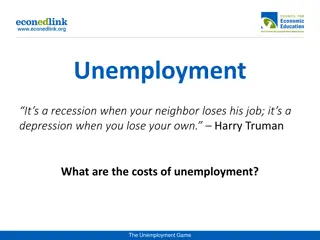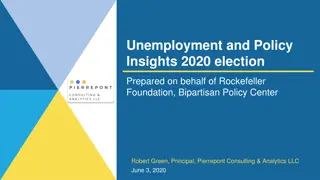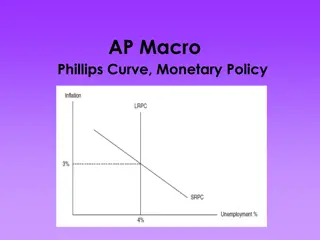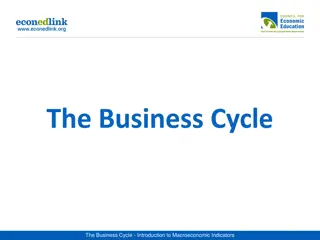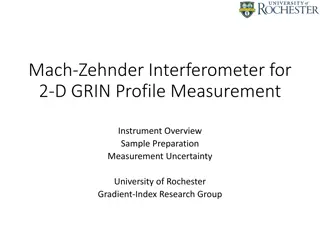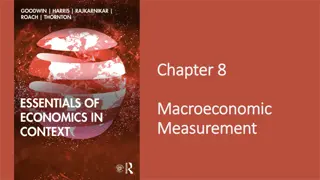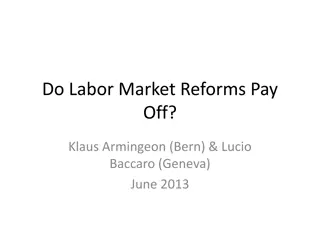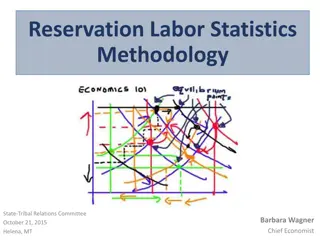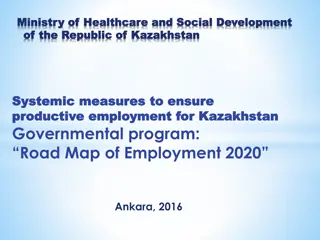Understanding Unemployment: Meaning, Calculation, and Measurement
Exploring the concept of unemployment, its calculation methods, and challenges in accurately measuring the unemployment rate. Discover the definitions of key terms like labor force, employed, and unemployed, along with insights on discouraged workers and underemployment.
Download Presentation

Please find below an Image/Link to download the presentation.
The content on the website is provided AS IS for your information and personal use only. It may not be sold, licensed, or shared on other websites without obtaining consent from the author. Download presentation by click this link. If you encounter any issues during the download, it is possible that the publisher has removed the file from their server.
E N D
Presentation Transcript
The Meaning and Calculation of Unemployment
Defining and Measuring Unemployment Employed working Unemployed to be without work and to be actively seeking employment Unemployment rate Percentage of people in the labor force who are unemployed
Defining and Measuring Unemployment Labor force the sum of the employed and the unemployed. Labor force participation rate the share of the working-age population in the labor force Unemployment Rate The number of unemployed workers in the labor force
UNEMPLOYMENT Measurement of Unemployment, 2009 Under 16 and/or institutionalized 71,400,000 Not in labor force 81,700,000 Total Population 307,300,000 139,900,000 Labor force Employed 154,200,000 Unemployed 14,300,000
Problems with the Unemployment Rate Unemployment may be overstated due to people waiting to take jobs even though jobs available. Unemployment may be understated due to discouraged workers, marginally attached workers and the underemployed.
Problems with Unemployment Rate Discouraged workers: those who have become so frustrated and stopped looking are no longer considered unemployed Marginally attached: those who have looked recently but are not currently looking Underemployed. Those who work minimally (at least one hour) are considered employed. Also many people take jobs below their skill level. http://www.bls.gov/news.release/empsit.t15.htm
Whos Employed and Whos Not Classify each of the following individuals as EMPLOYED, UNEMPLOYED or NOT IN THE LABOR FORCE Steve worked forty hours last week in a music supply store. Sergio, a classically trained musician, can only find work playing for local parties. Anthony, a schoolteacher, is not working during his three-month summer break.
Renee lost her job at the R-Gone Manufacturing Company. After searching for 6 months, Renee gave up looking last month. Natasha, a graduate student, went back to school because jobs were scarce. Raj is taking a year off from work to stay home with his daughter. Raj s father is unable to work.
Scott has a Ph.D.. He worked full-time but doesn t like his job as a dishwasher. Mary-Helen has been out of work for a full year. She was looking for a job up until last month. She is not actively searching for work right now.
Variations in Unemployment Rates Work easier to find in prime age group of 25- 54 Teenagers and minority groups have the highest unemployment rates
Types of Unemployment Frictional unemployment is also known as job search unemployment These people are temporarily between jobs. (ex: recent graduates, those who have relocated, those looking for a better job) These people have skills and there are jobs available for them Seasonal unemployment(subset of frictional unemployment) workers who due to weather or other variations are not working presently
Types of Unemployment Structural unemployment involves mismatches between job seekers and job openings at current wage rate. Causes People lack skills demanded (technological innovation) Minimum wage laws Labor unions Efficiency wages Side effects of public policy
Types of Unemployment Cyclical unemployment is caused by recessions. People aren t buying goods so workers are laid off.
Types of Unemployment Decide which of the following types each scenario describes: frictional, seasonal, structural or cyclical A Wisconsin construction worker cannot find work in the winter A steelworker is laid off because of a long recession A computer programmer quits her job in Chicago to look for a new job in San Diego A store clerk loses her job because sales are slow during a business slump
A high school dropout applies for several jobs but is told each time that he is not qualified. An unemployed college senior is looking for her first job. An unemployed auto worker has been replaced by a robot. A person rejects a job offer because the wage is too low.
Full Employment Rate a.k.a. Natural Rate of Unemployment It is the lowest possible unemployment rate with the economy growing (maximum potential employment) . It takes into account unavoidable unemployment such as structural and frictional, but not cyclical. It is considered to be about 5% unemployed. If the current unemployment rate is 8.3%, how much is due to cyclical unemployment?
Changes in the Natural Rate of Unemployment The natural rate of unemployment changes over time and across national borders.
Changes in Natural Rate of Unemployment Causes Changes in labor force characteristics Experienced vs inexperienced workforce Changes in labor market institutions Labor union membership Temp employment agencies and online job search Demand for skilled vs unskilled labor Changes in government policies Income security vs job training








